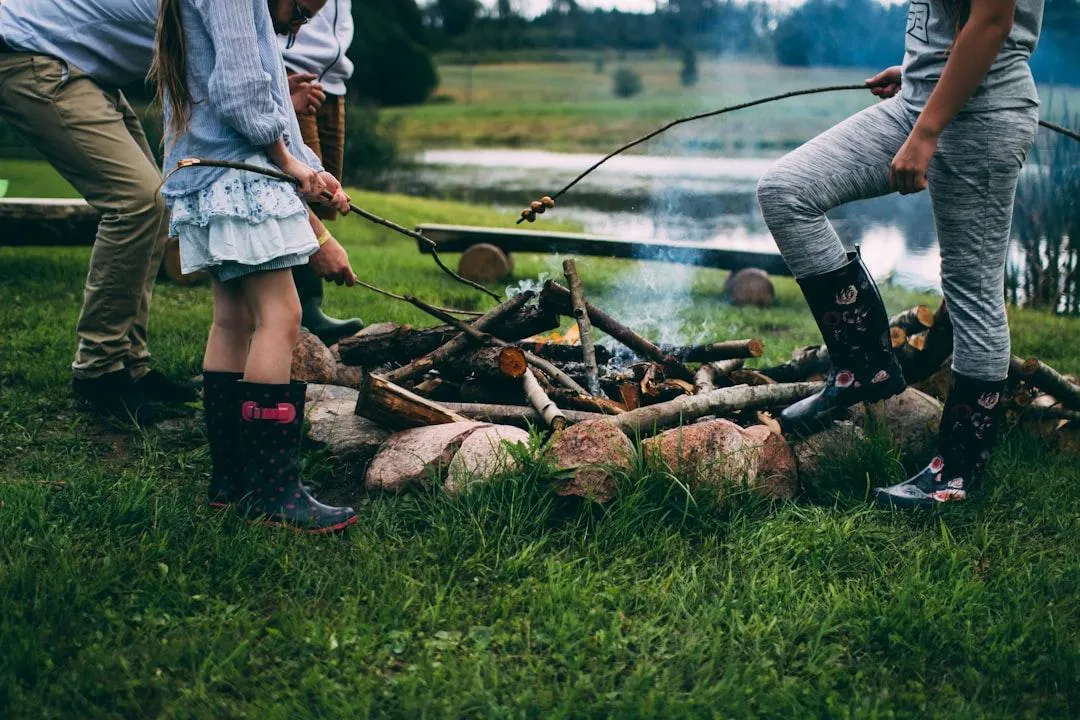
HOMESTEAD FANATIC BLOG
Discover amazing destinations, plan your perfect trip, and book unforgettable experiences. Our travel website makes traveling around the world easy, enjoyable, and hassle-free.
EXPLORE GREAT PLACES
THE HOMESTEAD BLOG

Water Storage for Preppers: How Much Do You Really Need?
Water is life — a simple truth that becomes even more critical for preppers planning for emergencies. Whether you're bracing for natural disasters, societal disruptions, or long-term survival scenarios, understanding proper water storage is key. But how much water do you really need, and what are the best methods to store it safely? Let’s dive into the essentials of water storage for preppers.
Why Water Storage is Crucial for Preppers
In any emergency, access to clean water can be the difference between survival and catastrophe. The average person can only survive about three days without water. Additionally, water is necessary for hygiene, cooking, and medical needs, making it a top priority in your prepping strategy.
Natural disasters like hurricanes, floods, or earthquakes can disrupt water supplies instantly. Infrastructure failures or contamination can render tap water unsafe. Prepping ensures you’re not left vulnerable when these events occur.
Calculating Your Water Needs
The general rule of thumb for water storage is one gallon per person per day. This covers drinking, cooking, and basic hygiene. Let’s break it down further:
Drinking: Half a gallon per day.
Cooking and Hygiene: Half a gallon per day.
However, several factors could increase your needs:
Climate: Hot, dry environments require more water.
Activity Levels: High physical activity boosts hydration needs.
Medical Needs: Certain conditions demand more water intake.
Pets: Don’t forget water for pets — typically about one ounce per pound of body weight per day.
For a family of four preparing for a two-week emergency, you’d need at least 56 gallons of water. For longer-term scenarios, consider larger quantities and diversification of storage methods.
Best Water Storage Solutions
1. Bottled Water
The simplest option. Store sealed commercial bottles in a cool, dark place. Rotate every 6-12 months.
2. Water Jugs and Containers
Use food-grade containers ranging from 5 to 7 gallons. They’re portable and stackable, making them ideal for short-term emergencies.
3. 55-Gallon Drums
Perfect for long-term storage. Use BPA-free, food-grade plastic drums. Treat with water preservatives and keep in a shaded area.
4. IBC Totes
These industrial-grade containers hold up to 275 gallons. They require more space but are ideal for serious preppers.
5. Rainwater Collection Systems
Harvest rainwater from your roof into barrels or cisterns. Ensure filtration and purification before consumption.
6. Underground Cisterns or Water Tanks
For large-scale, long-term storage, these protect water from temperature fluctuations and contamination.
7. Water Bricks
These stackable, durable containers hold about 3.5 gallons each and are designed for compact storage. They’re easy to transport and great for modular storage.
8. Collapsible Water Containers
Lightweight and space-saving when empty, these containers are perfect for bug-out bags or quick evacuations.
Purifying Stored Water
Stored water may become contaminated over time. Use these methods to ensure safety:
Boiling: The most reliable method.
Water Purification Tablets: Great for quick disinfection.
Bleach: Add 8 drops of unscented bleach per gallon, stir, and let sit for 30 minutes.
Water Filters: Invest in high-quality gravity-fed or pump filters.
UV Light Purifiers: These devices use ultraviolet light to kill bacteria and viruses.
Solar Water Disinfection (SODIS): Place clear bottles filled with water in direct sunlight for at least six hours. The UV rays disinfect the water.
Storing Water in Different Climates
Hot Climates
In desert environments or hot climates, water consumption can double. Store water in shaded areas and use insulated containers to prevent heat degradation.
Cold Climates
In freezing conditions, use insulated storage or place containers indoors. Allow space for expansion in containers to prevent bursting.
Urban vs. Rural Storage
Urban preppers may have space constraints. Stackable containers and under-bed storage options maximize space. Rural preppers can opt for larger rain catchment systems or underground cisterns.
Water Collection Techniques
Rainwater Harvesting
Install gutters and downspouts leading to barrels or cisterns. Use mesh screens to keep debris out.
Well Water
If you have a well, install a manual pump to access water during power outages.
Natural Water Sources
Identify local rivers, lakes, and ponds as backup sources. Always purify this water before use.
Long-Term Water Storage Strategies
For long-term prepping, redundancy is key. Store water in multiple locations and use different methods to ensure accessibility. Rotate supplies every 6-12 months and regularly check for contamination.
Building a Water Supply Rotation Plan
Date Labeling: Mark each container with the date of storage.
First In, First Out: Use the oldest stored water first.
Inspection: Check for cloudiness, odors, or signs of algae.
DIY Water Storage Solutions
If you’re on a budget, you can repurpose food-grade containers like soda bottles or juice jugs. Clean thoroughly with soap and water, then sanitize with a bleach solution.
Emergency Water Sources
If your stored water runs out, consider these options:
Hot Water Tanks: Most homes have 30-50 gallons of drinkable water in their water heater.
Toilet Tanks: (Not the bowl) contain clean water, provided no chemical cleaners were used.
Ice: Melt ice cubes in emergencies.
Community Water Storage
Consider pooling resources with neighbors or creating a community rainwater catchment system. This strengthens community bonds and ensures everyone has access to emergency water.
Water Storage for Pets and Livestock
Don’t forget animals in your water storage plan:
Dogs and Cats: Plan for one ounce of water per pound of body weight per day.
Livestock: Large animals require substantial amounts. For example, a horse needs about 10-15 gallons daily.
Staying Informed
Follow local emergency management agencies for alerts and updates. Apps like FEMA and Red Cross provide real-time information.
Final Thoughts: Water is Your Lifeline
Water is your most crucial resource in a survival scenario. By calculating your needs, selecting the right storage methods, and preparing for purification, you can ensure you and your family stay hydrated and healthy no matter what comes your way.
Are you ready to build your water storage plan? Start small, stay consistent, and prioritize safety. The time you invest now could make all the difference when disaster strikes.
Stay prepared, stay safe, and keep your water supplies flowing!

POPULAR QUESTIONS
Asked Questions ?
Many people interested in homesteading ask about how to get started, what animals and crops are best for beginners, and ways to generate income from their land. Food preservation techniques are also a common topic, as self-sufficiency plays a key role in homesteading success. These FAQs provide a helpful starting point for anyone looking to embrace a more independent and sustainable lifestyle.
What is homesteading?
Homesteading is a lifestyle focused on self-sufficiency, which often includes growing your own food, raising livestock, preserving food, and using sustainable practices to reduce reliance on modern systems.
How do I start homesteading with little or no land?
Even if you don’t have a large property, you can start small by container gardening, keeping backyard chickens (if permitted), composting, and learning essential skills like food preservation and DIY projects.
What animals are best for a beginner homesteader?
Chickens, rabbits, and ducks are great starter livestock. They require less space, are relatively easy to care for, and provide eggs or meat while helping with pest control.
How can I make money from homesteading?
Many homesteaders generate income by selling eggs, honey, homemade goods, fresh produce, handmade crafts, or even offering homestead-related workshops.
What are the best crops for beginner homesteaders?
Easy-to-grow crops include tomatoes, zucchini, lettuce, radishes, and herbs like basil and mint. These require minimal maintenance and provide a great starting point for new homesteaders.
How do I preserve food for long-term storage?
Canning, dehydrating, freezing, and fermenting are all effective ways to preserve food. Each method has its benefits, depending on the type of food and your available storage space.

Your Gateway to Global Adventures Await Here.
Quick Links
Home
About Us
Services
Blog
Quick Links
Email:
